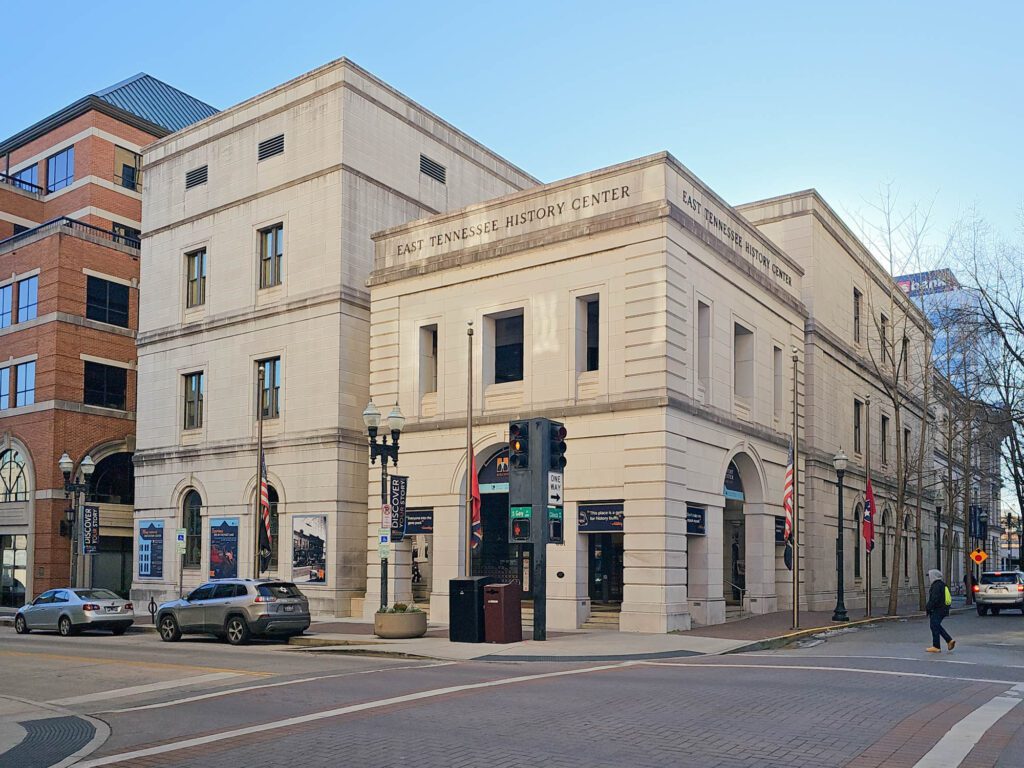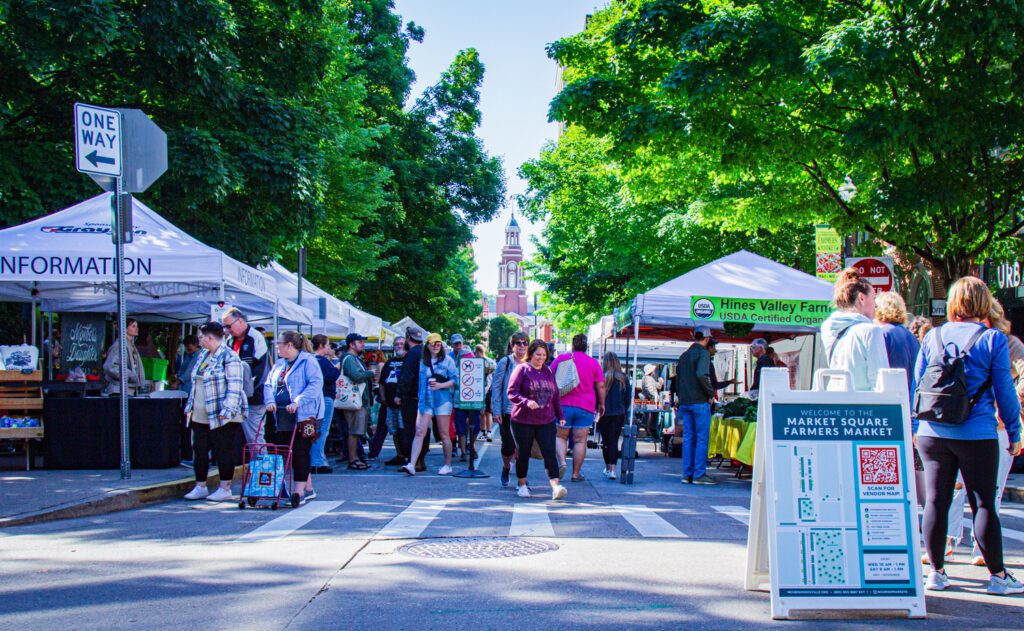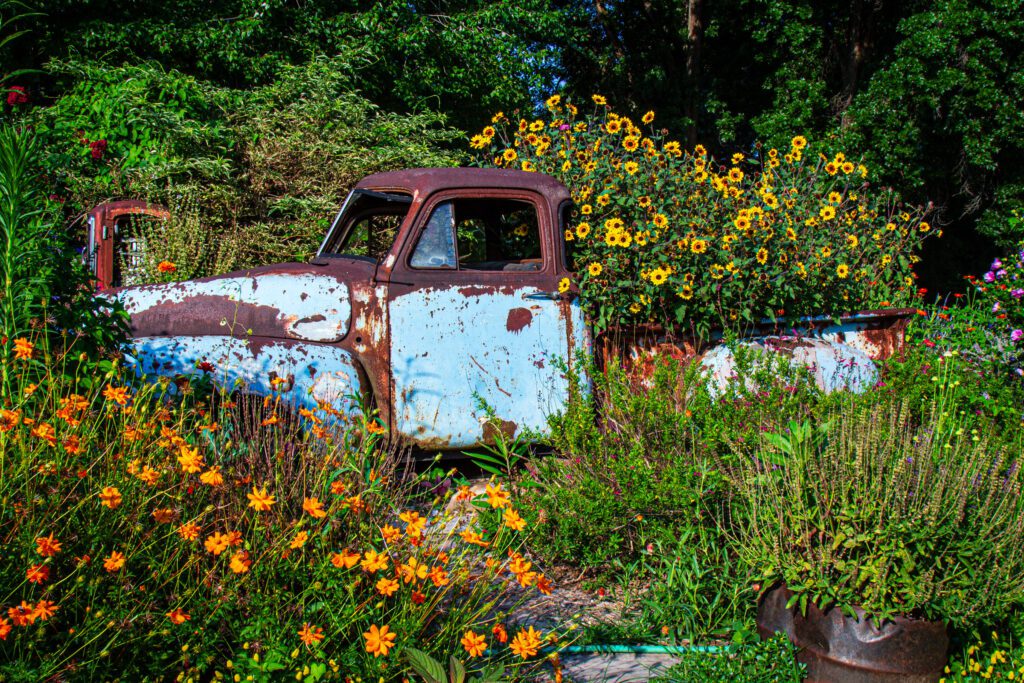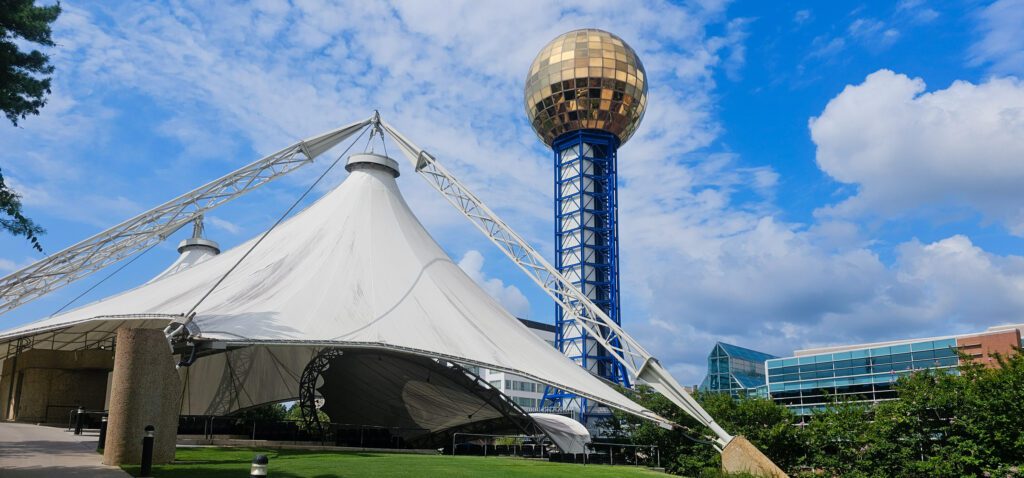I am not a fan of winter. My idea of a good time in the middle of winter is curling up in my recliner with a good book, a cup of hot chocolate, and a fluffy blanket. So early this week I was faced with a dilemma. It was downright cold outside, but I needed a topic for this week’s blog post. What was I to do? I decided that venturing out of hibernation to visit the Museum of East Tennessee History might be my best choice.
Thankfully, the snow had almost disappeared, and the temps were a little warmer when I finally poked my head out the door and drove downtown. The Museum of East Tennessee History had been on my radar for months, but I’d never taken the opportunity to go visit. This bleak winter afternoon seemed the perfect time.
We Start with the Tennessee History Center
The East Tennessee History Center is located at 601 South Gay Street. It sits directly across the street from the historic Tennessee Theatre. It houses the Knox County Archive on the second floor and the Calvin M. McClung Historical Collection on the third floor.
The Tennessee History Center is also home to the Tennessee Archive of Moving Image and Sound. This is a closed storage collection of photographs, films, videos, and audio which is available only by appointment.
Was the Museum of East Tennessee History Going to Be Worth My Time?
Most importantly for us, the Museum of East Tennessee History occupies the first floor. And that was my destination. Unfortunately, my expectations weren’t very high when I walked through the door.
I had been here once before to visit the McClung Collection for another post and hadn’t seen anything that gave me a clue if there was anything worth seeing here. In addition, I had heard little or nothing about this museum so I assumed I was in for a dry, dusty experience that I would have trouble finding enough to write about.
I Was Pleasantly Surprised by the Museum of East Tennessee History
I was totally wrong. Now let me say…if you’re not interested in history, this probably won’t be your idea of a good time. But, if you have any interest in history at all, you’re gonna love it.
When you begin your tour of the Museum, you’ll come to a placard that tells you a little about the building itself. I didn’t realize it was so old. The original portion of the building was the Old Custom House which was completed in 1874.
The placard goes on to tell you the architect used East Tennessee Marble which led to other architects using the marble on more famous structures such as the National Gallery of Art, the Lincoln Memorial, and the Metropolitan Museum of Art, just to name a few.
I also didn’t realize the Old Custom House had housed Knoxville’s main post office. Over time, two additions were added and the Tennessee Valley Authority (who maintained offices here for over forty years) gave the building to Knox County for a regional history center. If you walk a few steps further and you’ll see the stained-glass window from Knoxville’s L& N Railway Station.
It’s Immersive History at It’s Best
One of my favorite parts of the museum was the fully equipped corner drug store. As you can see by the pictures below, it is a treasure trove of artifacts and objects collected from all across the region. When you visit, make sure you take plenty of time to look through all the treasures in the drug store. I was fascinated by the Coke fountain, the weird medications, and the old typewriter.
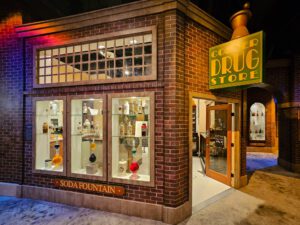

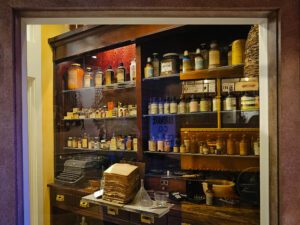
After you leave the corner drug store, you can peek in the window at the dentist office. This place is guaranteed to give you nightmares and have you counting your blessings that you live in the current time.
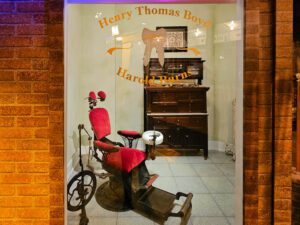
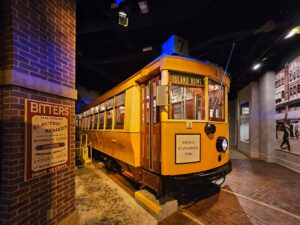
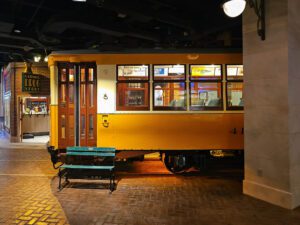
You can’t miss the streetcar, but don’t hesitate to spend a few minutes walking around and looking through the windows. At one point apparently you were able to climb up and pretend to take a ride but unfortunately it was blocked off when I was there.
I thoroughly enjoyed this section of the Museum of East Tennessee History. It allowed you to momentarily step back into history and imagine yourself sipping a fountain drink while waiting for your prescription before taking the streetcar home.
Voices of the Land
Continuing on, you’ll enter the Natalie L. Haslam Signature Gallery and begin your journey into the Voices of the Land: The People of East Tennessee. This exhibit allows you to explore the relationship of the people of East Tennessee to their land. You can read the words of over two centuries of East Tennesseans and see their prized possessions, their musical instruments, their clothing, and their tools.
The exhibit is divided into five chronological and thematic sections. Each section offers you a look into history and you’ll find yourself amazed by the sheer number and quality of the historical artifacts. One of my favorite displays was Music: The Heart and Soul of Our Land that displayed various instruments.

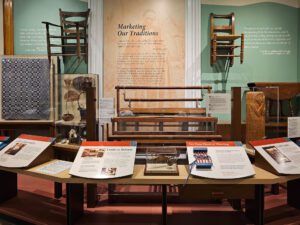

Other displays highlight the craftsmanship of the area. There are Revolutionary War artifacts in addition to Civil War documents and images. Yet another display talks about the Cherokee Sequoyah who invented a written native American language for his people and even showed you some examples of the writing.
I was sobered to see the display about Oak Ridge and read the comment by a Y-12 manager in 1945, “We train you how to do what is needed, but cannot tell you what you are doing. I can only tell you that if our enemies beat us to it, God have mercy on us!”
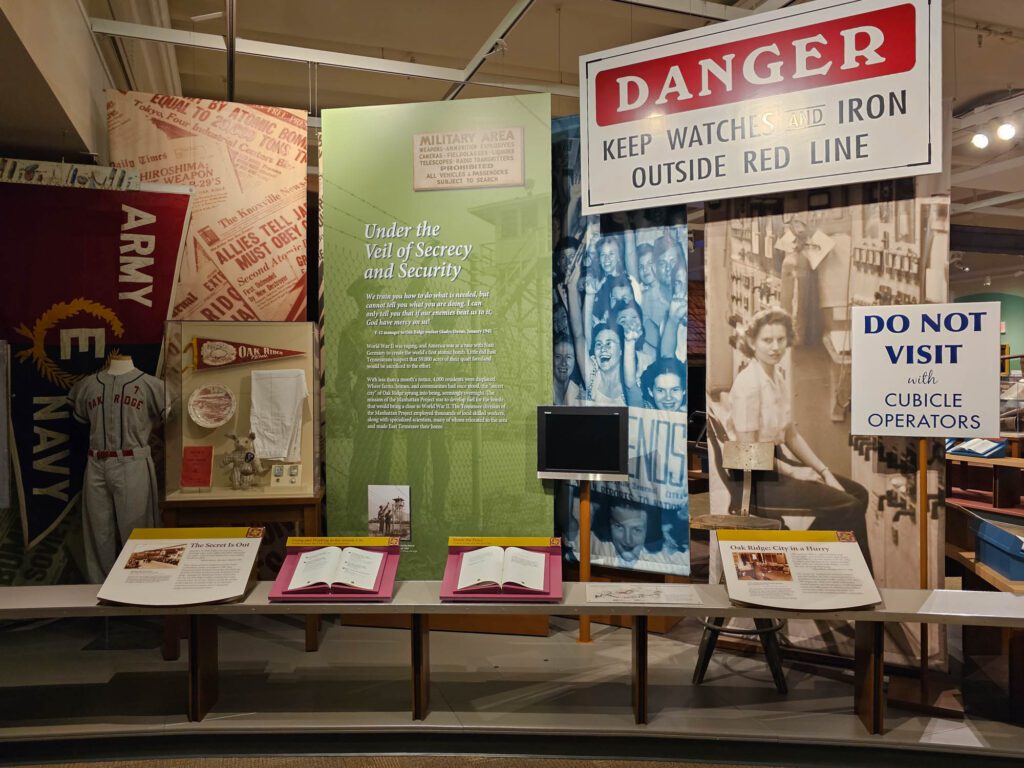
The only problem I had was having too little time to go through everything there was to see. I only had time to hit the highlights.
My Absolutely Most Favorite Part of the Entire Museum of East Tennessee History
While all of the Museum is fascinating, my favorite part is a section that’s really not designed for me at all. It is the History Headquarters that is for children. At first, I didn’t realize this was for kids and I’m glad I didn’t because I would have missed the most enjoyable part of the museum.
I would have missed the “discovery boxes” that hold clues to famous Tennesseans, and I would have missed the opportunity to trace photography from the 1800’s to the modern day. Children can also try crafts like weaving. I could have spent an hour here, but my time was limited.
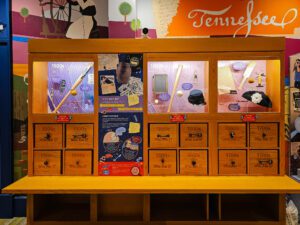

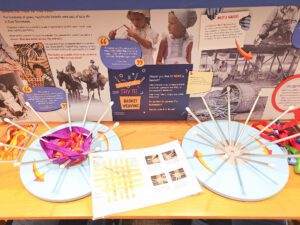
And that is the only problem I found with the Museum of East Tennessee History. There was so much to see that I ran out of time. In fact, I could have used at least another two hours to look at everything I wanted to see. I’ll be going back and probably taking hubby because he’s a real history buff.
Here Are the Details
If I’ve piqued your interest about the Museum, it is open Monday – Friday, 9am-4pm, Saturday from 10-4, and Sunday, 1-5pm. Admission is free for children 16 and under. Adult tickets are $10 and $8 for seniors.
If you’re really into history, you might consider purchasing The Historic House Museums of Knoxville Pastport which sells for $40. This small booklet gives a brief description of each house and includes admission to the six Historic houses of Knoxville and the Tennessee History Center. (Read my impressions about two of the houses here.)
You can purchase the “Pastport” at all the historic houses and at the Tennessee History Center. You can get more information by clicking here.
What about you? Have you been to the Museum of East Tennessee History? If so, what did you think and what was your favorite part?

